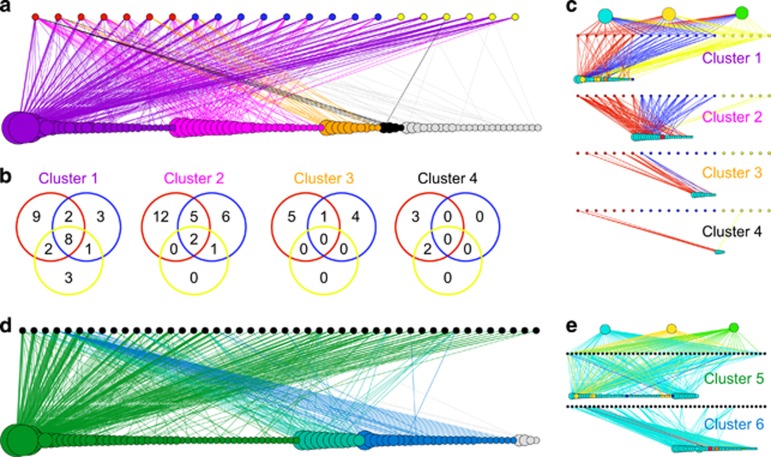Figure 3.
Coral host–Symbiodinium bipartite networks over reefs (a) and host genera (d) from three regions across the Arabian Seas and bipartite networks for significant OTU co-occurrence clusters over reefs (c) and hosts (e). Top nodes represent reefs over three sampling regions for (a, c) (red=Red Sea, blue=Gulf of Oman, yellow=Persian/Arabian Gulf), and the number of shared OTUs per region and cluster is illustrated with Venn diagrams (b). Top nodes in (d, e) represent host taxa; all bottom nodes represent Symbiodinium OTUs. In (a, d) OTUs are ordered by cluster (color codes as in Figure 2) and by abundance (indicated by relative size) and in (c, e) OTUs are ordered by abundance (size) with the three most abundant OTU arranged at the top of the graph for clarity and colored by clade (Symbiodinium clade A=green, B=dark orange, C=cyan, D=yellow, F=blue, G=red). Lines represent observed associations. Corals have very few extreme specialists or generalists and Symbiodinium have many specialists and a few extreme generalists.

